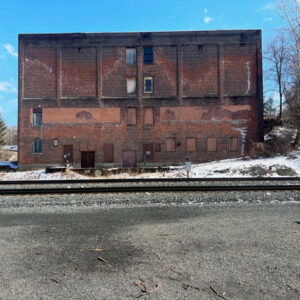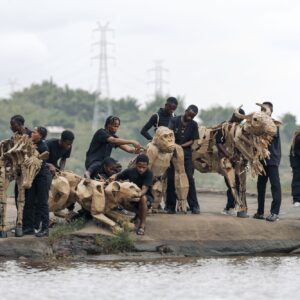A major new exhibition by the renowned Guyanese-British artist Hew Locke to open at the British Museum in October.
Following a two-year curatorial collaboration with the British Museum, Hew Locke: what have we here? is Locke’s personal and emotive exploration of the collection highlighting both treasures and lesser-known objects from Africa, India and the Caribbean. It will examine British imperial power while also considering today’s often contentious and deeply felt debates around cultural heritage.
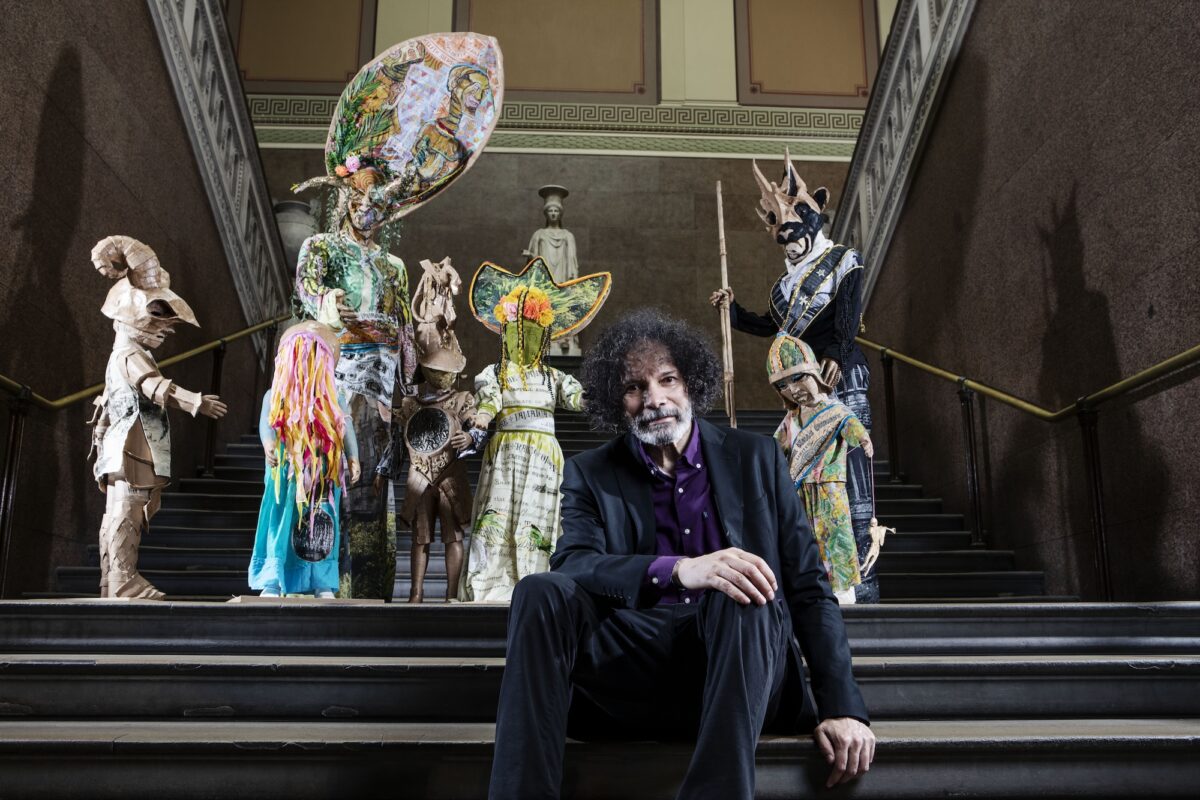
I have been visiting the British Museum’s collections for 40 years, and this project has enabled me to engage with them in a much deeper way than ever before, and in a way few artists have had the privilege of doing. I have always been interested in the way objects are interpreted through display in museums. What story has been chosen and is being told or implied about the past? How does it relate to the present? How can this telling be questioned, disrupted, or complicated? These are the questions I am tackling through this project.
It has been extraordinary for me to get behind the scenes and intimate with objects in the collection.
Hew Locke
One of these is an Akan gold-weight that shows a bird with its head turned to look over its back, The
Sankofa. It illustrates a proverb that means that we should look to the past to become wiser in the
future. The object is small, but the symbolism is huge.
Like many museums across the world, the British Museum’s history and collections have ties to Empire. This bold exhibition aims to bring nuance to often-polarised debates, encouraging visitors to leave with more questions than answers.
Newly commissioned sculptural work by Hew Locke will form a central part of the exhibition. Titled The Watchers, carnivalesque figures will be embedded into the build of the exhibition, observing visitors from vantage points throughout the space, acting in the manner of a Greek chorus. In dialogue with objects from the Museum’s collection, the figures prompt visitors to question their relationship with these objects and the cultures they represent, as well as the balance of power between observer and observed. The Watchers will also spill out of the exhibition into the Museum’s Enlightenment Gallery (Room 1), providing a way for visitors to interact with Locke’s sculptures in the context of the permanent galleries.
To curate the exhibition, Hew Locke and his partner and studio curator Indra Khanna have been visiting the British Museum over a two-year period, viewing objects in the stores and study rooms and working closely with over 20 specialist curators. This will be Locke’s first artist-curated museum exhibition, and an opportunity for him to engage more deeply with a museum collection than ever before.
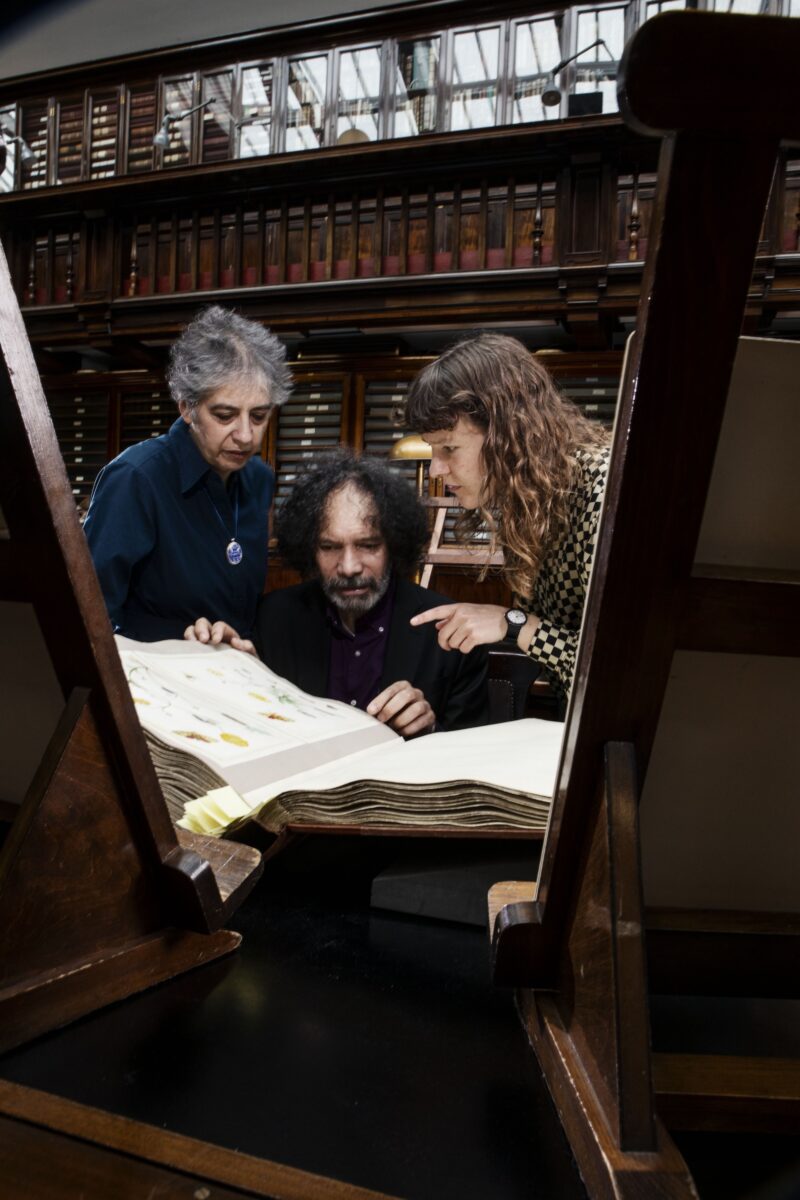
Focusing on Britain’s historical interactions with Africa, India, and the Caribbean, all of which had a significant impact on Guyana where Locke grew up, the exhibition will feature over 150 objects. The majority are from the Museum’s own collection, alongside Locke’s own work, personal items such as his OBE medal, and generous loans from other UK institutions including the Royal Collection Trust, the British Library, the National Trust and the Imperial War Museum.

commissioned this copper token for small transactions on Barbados. The coins were struck in the UK and shipped to the Caribbean, their imagery emphasising Black Africans’ subjection to white planters, and Barbados’s subjection to the Crown. John Gregory Hancock Sr. (1775–1815), British, 1792
Copper alloy Bequeathed by Thomas Bryan Clarke Thornhill
Instead of a traditional linear narrative, Hew Locke: what have we here? fosters imaginative groupings and juxtapositions of disparate objects, examining histories of Empire and its afterlives from a personal perspective. Featuring four overlapping themes, visitors make their own choice of route through the exhibition, creating their own connections.
Hew Locke is rightly one of the United Kingdom’s most admired contemporary artists so I’m delighted that we are collaborating with him for this distinctive exhibition. As well as introducing stunning new works, Hew will bring his unique perspective on the Museum’s collection and history asking questions, and encouraging reflection and debate about how we present this historic collection to future audiences. I for one can’t wait to engage.
Nicholas Cullinan, Director of the British Museum
Sovereigns and Icons of Nationhood explores how nations or empires invest power in symbolic images and objects, such as seals, coats of arms, and crowns, often appropriating symbols from other cultures. It will feature Hew Locke’s Souvenir series (2018–24), reworked 19th century mass-produced Parian ware busts of figures from the British royal family decorated with plastic gilding, embroidery and jewels but also replicas of medals, coins, and other souvenirs of imperial conflicts. Trade delves into the role of trading posts and corporations in British imperial expansion, highlighting the East India Company and the Royal African Company’s roles in establishing trade routes and monopolies, the latter formalising England’s involvement in the transatlantic trade in enslaved people. Items from the Caribbean will be on show, including a Barbados penny struck in 1788. This was the first coin to be widely used on the island, its imagery emphasising Black Africans’ subjection to white planters, and Barbados’ subjection to the Crown.

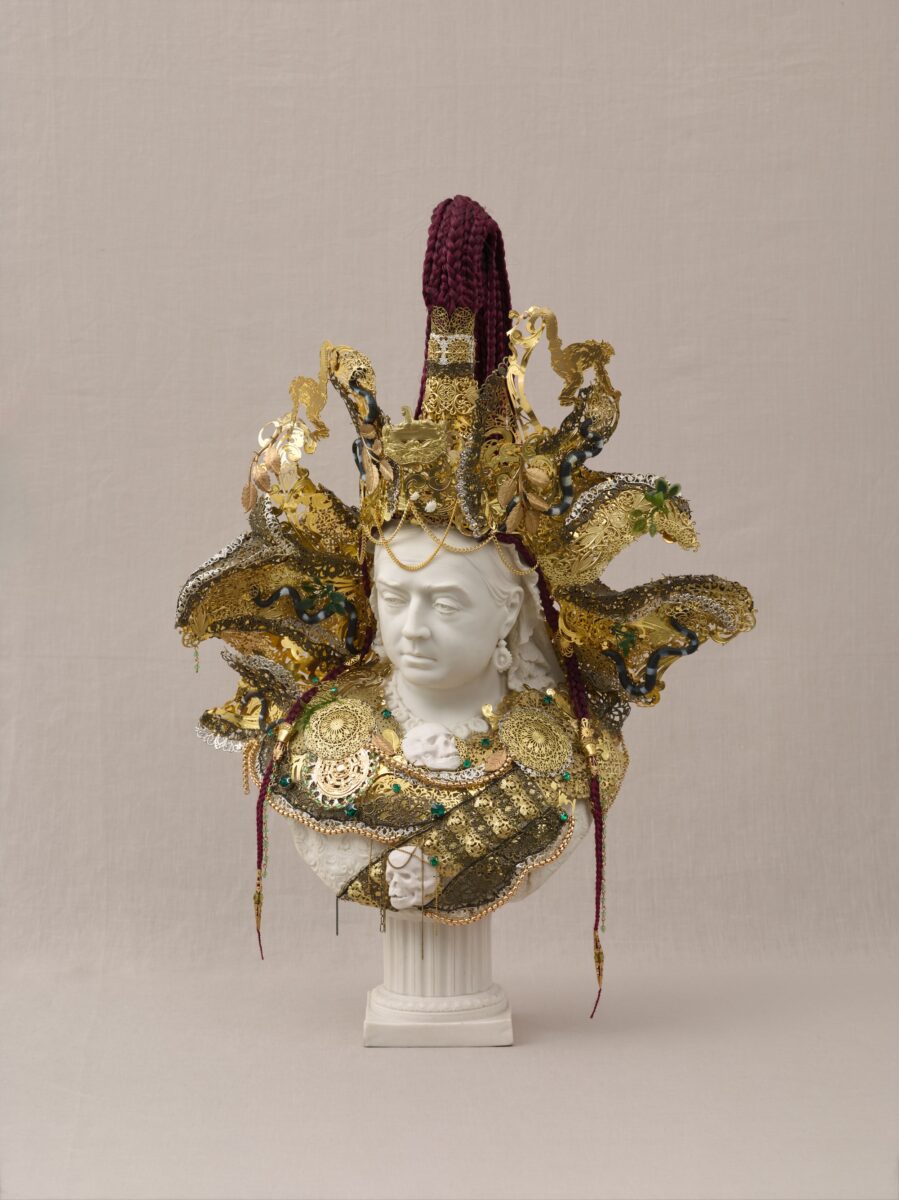
For Conflict Hew Locke has chosen objects that shed light on the impact of Empire – from encounters between cultures to violence and subjugation. In opposition to the violence of military campaigns, there are many examples of mutiny, rebellion and revolution in the Americas, Africa and India. Objects in this theme will include John White’s late sixteenth-century drawings of Algonquian people; drawn by a governor of the Roanoke colony in Virginia, these comprise some of the earliest surviving drawings of Indigenous Americans by a European artist.
The final theme, Treasure, features items seized through military conquest, which were often used in displays of sovereign power and status. This section explores how the meaning of objects change as they move from place to place, context to context, over time, such as a silver-gilt dish, which features an Asante soul-washer disc at its centre. Taken from Asantehene Kofi Karikari as part of an indemnity payment imposed by British forces at the conclusion of the Third Anglo-Asante war in 1874, this pendant was then set in a silver gilt dish by Victorian jewellers, along with an inscription recording the story of its seizure.
Hew Locke: what have we here? 17th October 2024–9th February 2025 The British Museum
Hew Locke: what have we here? is an exhibition created by Hew Locke and the British Museum, with the assistance of Indra Khanna.
To accompany the exhibition, the British Museum Press will publish a beautifully illustrated catalogue Hew Locke: what have we here? written by Hew Locke, Isabel Seligman and Indra Khanna. Publishing October 2024, RRP £30. ISBN 9780714123509.
About the artist
Hew Locke was born in Edinburgh, UK, in 1959; lived from 1966 to 1980 in Georgetown, Guyana; and
is currently based in London. In 2000 he won both a Paul Hamlyn Award and an East International
Award. In 2022 he was elected a member of The Royal Academy of Arts, and was made an OBE in
2023.
His work is represented in many collections including the Government Art Collection, the Pérez Art
Museum Miami, the Tate, Arts Council of England, the National Trust, The Metropolitan Museum of
Art, New York, the Brooklyn Museum, New York, 21c, The New Art Gallery Walsall, the Victoria &
Albert Museum, the Imperial War Museum, the British Museum and the Henry Moore Institute, Leeds.






